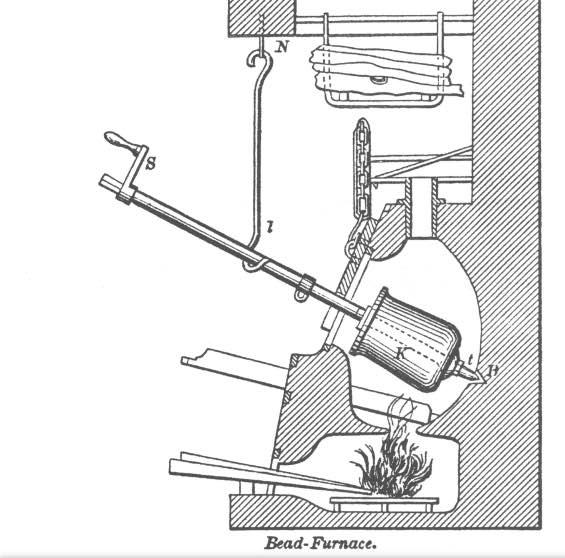| Correct ID | |||||
| Re: a speo is a method not a bead type... -- TASART | Post Reply | Edit | Forum | Where am I? | |
09/29/2020, 19:29:47
Thomas' explanation was on the road to getting there.
The two methods he mentions are the a-speo and a-ferrata methods. A-speo beads are not pertinent here, so we can exclude any discussion of that skill-set.
The a-ferrata (or "iron pan method"), has been exploited for thousands of years, in the manufacture of small glass seedbeads. In all likelihood it was developed at South India, where Indo-Pacific beads were devised. This technique was effective for small beads, but not larger beads. For larger beads, in the Venetian industry, the a-speo methods were exploited (mainly in the 17th C.).
In modern times we are familiar with the term "hot-tumbled" for modern seedbeads. This refers to placing unfinished drawn beads (that have merely been reduced to segments) into a barrel-shaped iron container, turned onto an angle, and placed into a furnace—whereupon the container is rotated while being heated. Once the correct temperature is reached, the beads become softened and rounded.
The a-ferrata method is nothing more than the ancestor of hot-tumbling. The difference is that, formerly, the beads were placed in an open pan, over a furnace fire, and were stirred with a metal spatula. Initially, hot-tumbling was effective for making small seedbeads
Hot-tumbling was exploited at Venice, and may have been devised there. Note the diagram shown here from 1845. It appears the apparatus was refined enough that larger pieces of cane could be so-treated—devised in the 20th century at ca. 1920.
This advancement is what made the beads seen in our original question possible. And yet the process is not foolproof. It is possible that the beads might be allowed to become too hot. Or the drum was not rotated for long enough before the beads were deemed to be finished. And either of these situation might result in the collapsed beads we see in the present photo above.
The link posted here goes to a dialogue from 2006, in which methods for finishing drawn beads are discussed.
I also recommend the long article I composed for Beads (the SBR, Volume 16, 2004).
http://beadcollector.net/cgi-bin/anyboard.cgi?fvp=/openforum/&cmd=get&cG=4343834333&zu=3434373934&v=2&gV=0&p=

Related link: http://beadcollector.net/cgi-bin/anyboard.cgi?fvp=/openforum/&cmd=get&cG=4343834333&zu=3434373934&v=2&gV=0&p=
All rights reserved by Bead Collector Network and its users